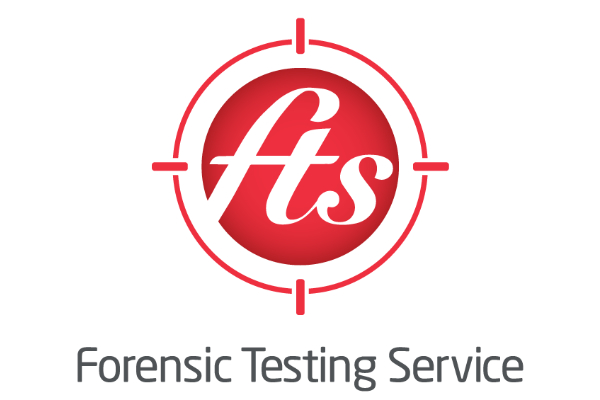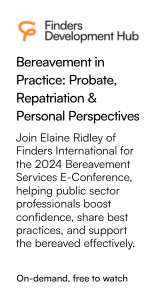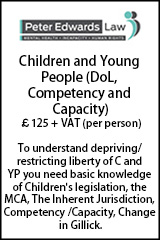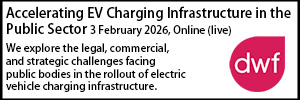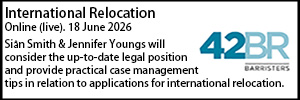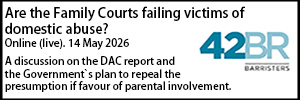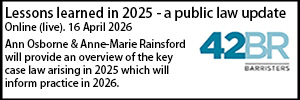Post adoption contact – PLWG best practice: a guide
- Details
In this first article in a series covering the Public Law Working Group’s recommendations for best practice for adoption, Avaia Williams delves into Chapter 1 of the PLWG report, which addresses a pivotal topic for professionals and families involved in adoption proceedings: post-adoption contact.
Recognising the evolving needs of adopted children, birth families, and adoptive families, Chapter 1 emphasises a more dynamic and child-cantered approach to contact that could bring significant changes to both the pre-adoption and post-adoption landscape.
This article will follow the general chronology and sub-headings of the report to ensure consistency, but hopefully will break this down into a more bite size and user-friendly guide to what the PLWG have suggested and, importantly, how this might impact cases going forward for all court users.
Background
Historically, children were placed for adoption with no expectation, or even framework, for contact after they had been adopted – this was believed to be protective at the time. By the time of the Adoption Act 1976, research began to show that such adoption arrangements could lead to serious disadvantages around their sense of identity, though the 1976 Act remained void of any provision to promote such contact.
The landscape for care proceedings took the first step towards promoting contact; section 34 of the Children Act 1989 provides:
“Where a child is in the care of a local authority, the authority shall (subject to the provisions of this section) […] allow the child reasonable contact with—
(a) his parents…”
Whilst not applying to the adoption landscape, it was clear that contact with a birth family was considered, at least broadly, in the best interests of the child. The Adoption and Children Act 2002 brought the adoption system closer in line with the care system, providing that a court must consider the issue of contact before it could make an adoption Order (Adoption and Children Act, s.46(6)), but this did not extend a duty to promote this contact.
The House of Lords Select Committee on Adoption Legislation reported the following in 2013, at paragraphs 255 and 256:
“Many families participate in ‘letter-box contact’, once or twice a year, which involves exchanging information between the adoptive family and the birth parents. This contact is usually facilitated by the adoption agency to protect the identity and location of the adoptive family. Direct contact with birth parents is rare; it occurs more often with siblings.”
“The evidence we received did not suggest that change was required to the legislative framework.”
In more recent years (at least in the legal sense), The Children and Families Act 2014 amended the 2002 Act, inserting Section 51A which was the first concrete legislative enactment that looked at post-adoption contact, noting:
“(2) When making the adoption order or at any time afterwards, the court may make an order under this section—
(a) requiring the person in whose favour the adoption order is or has been made to allow the child to visit or stay with the person named in the order under this section, or for the person named in that order and the child otherwise to have contact with each other, or
(b) prohibiting the person named in the order under this section from having contact with the child.
(3) The following people may be named in an order under this section—
(a) any person who (but for the child’s adoption) would be related to the child by blood (including half-blood), marriage or civil partnership;
[…]
(4) An application for an order under this section may be made by—
(a) a person who has applied for the adoption order or in whose favour the adoption order is or has been made,
(b) the child, or
(c) any person who has obtained the court’s leave to make the application.
(5) In deciding whether to grant leave under subsection (4)(c), the court must consider
(a) any risk there might be of the proposed application disrupting the child’s life to such an extent that he or she would be harmed by it (within the meaning of the 1989 Act),
(b) the applicant’s connection with the child, an
(c) any representations made to the court by—
(i) the child, or
(ii) a person who has applied for the adoption order or in whose favour the adoption order is or has been made.”
However, as the report notes:
“…there is little reported case-law to suggest that these provisions are being actively used (see appendix A: table of post-adoption case-law, prepared by Sharon Segal) and anecdotal experience suggests that these provisions are rarely employed. Furthermore, indirect and letterbox contact remains the predominant contact provision post adoption in England and Wales.”
It is only in the past few years that post adoption contact has been taken seriously. In 2022, the House of Lords Children and Families Act 2014 Committee reported: “The failure to modernise contact threatens to undermine the adoption system.” Sir Andrew McFarlane, the President of the Family Division, in a series of lectures, has further highlighted the need for greater understanding of the benefits of post adoption contact; speaking on Re B (A Child) (Post Adoption Contact) [2019] EWCA Civ 29, the President noted that ‘the imposition on prospective adopters of orders for contact with which they were not in agreement is extremely, and remains, unusual.’ Essentially opining that greater flexibility in post-adoption contact must be on a case-by-case basis.
In a more recent lecture (the POTATO Conference lecture), the President reflected upon research into the attitudes of those who have been adopted, the report notes that:
“The message from those lectures was that the court and the Family Judiciary have an important part to play in the cultural shift towards greater openess for adopted people and their families. Orders for contact made at the time of the placement order under s26 ACA 2002 can set the template for contact going forward, and this will be an Important ‘known known’ about the child to be taken on board by any potential adopters with whom placement may be considered.”
Research
The research of Elsbeth Neil and Julie Selwyn played an invaluable backdrop to the reports research. The PLWG noted that understanding the approach in Northern Ireland, where post-adoption contact plans are usually prepared with provisions for direct contact.
The Working Group reported that there were several research issues influential to the thinking of the report:
- Transparency and openness around the circumstances of the adoptee’s birth family is beneficial to the child.
- The purpose of post-adoption contact is to support the child to understand their experience and develop their sense of identity.
- Separating siblings can lead to an enduring sense of loss.
- Face-to-face contact helps children develop their identity and to accept the reasons behind their adoption.
- Ensuring contact is safe is vital for any positive outcomes.
- Communication with and understanding from the parties involved in contact is important to its success.
- Despite research indicating the benefits, the overwhelming majority of cases remain letterbox only. Where direct contact does occur, this is often without formal agreement.
- A high degree of letterbox contact arrangements stall due to the failure of one or both parties to maintain the arrangement, leaving many children without effective contact.
- The Northern Ireland experience suggests a shift in the mindset of adoption professionals and guidance from the judiciary can bring about a change in post-adoption contact without the need for primary legislation.
Given the value of the research in this area, the Working Group considered how widely available this was for those working in the field, noting that this requires private study that is not always possible.
“Disseminating the results of the extensive research in this area seemed to us an important first step, so that all approach the concept of post adoption with a clear and realistic outlook.”
The positions of those involved in adoption need to be understood and addressed:
“…birth parents may find it hard to engage in conversations around post-adoption contact at a time when they may be contesting proceedings and seeking the return of their child. Support counselling and guidance for them needs to be carefully thought out and should be available not just before and during proceedings but after the decision is made, and once they have had time to process their situation.”
“In the same way, the views of adopters around post-adoption contact may change over time. Contact plans are almost always voluntary and a good understanding of why such contact is necessary better enables them to commit to the plan. An adopter’s commitment to post-adoption contact may be very high immediately after training but may fluctuate for any number of reasons. Access to training and education for them should be available at all stages of the process including after the order is made.”
The PLWG endorses the comments made in the House of Lords Committee report, noting that there is a need for a meaningful but safe system allowing for support for lifelong contact with members of the birth families, where this is safe. It is clear that, alongside this, social workers, children’s guardians, and judges need to change their thinking about post-adoption contact. A key point emphasised by the report is that any change in approach must be coordinated will all parties working on the same page as “[A]nything less is unlikely to bring about the wholesale change in the manner in which post adoption contact is managed.”
Finally, the Working Group considered digital innovations being piloted in post-adoption contact, namely ‘Letterswap’ and ‘ARCBOX’ which are platforms being utilise to support electronic exchange between adoptive and birth families.
General Recommendations
The PLWG makes six broad general recommendations to post-adoption contact.
Change the approach to face-to-face contact – Greater consideration needs to be given as to whether there should be face-to-face contact between the child and their birth family. Whilst this won’t be safe in all cases, it is outdated for this to be the extremely rare exception.
Consistent training for prospective adopters – Regardless of who delivers training, there needs to be a consistent message that places lifelong needs of adopted children at its core, notably in relation to their sense of identity and the importance of communication and birth family contact in order to meet those needs. Training should include the available research and voices of those impacted by adoption.
Ongoing training for adoption practitioners – Social workers, lawyers and judges should undergo regular training which is underscored by the research outcomes of post-adoption contact. This training should also include the voices of those impacted by adoption.
Signpost birth parents to independent support ASAP – Birth parents should be provided guidance, counselling and support. The requirement under ss. 3-4 ACA 2002 for support should be promoted. Birth parents should be encouraged to use a support worker and Adoption agencies should be responsible for signposting parents to support. Cafcass or the court should ensure this service is being offered and the care plan should prompt the social worker to ensure that it has been done.
Ongoing support for birth parents – Regional adoption agencies should offer or commission ongoing support. There should be a strong awareness among the agencies staff, and a clear presence on their website and printed materials, of how to access this support. Should these services not be taken up, independent advice and information services may be a way to enable reconsideration. Should these services still not have been taken up one year after the Orders are made, adoption agencies should again approach birth parents.
Establish best practice guidance – Similar to the Welsh system, there should be a best practice guidance dealing with the approach of practitioners to post-adoption contact and encompassing the recommendations of the report.
The Working Group’s general recommendations advocate for a structured, supportive, and importantly a research-informed framework to post-adoption contact. By standardising training, enhancing support for birth families, and guiding practitioners via a consistent best practice approach, a clear and child-centred approach to adoption will evolve that prioritises the identity of adopted children.
Recommendations Pre-Proceedings
In addition to the general recommendations with respect to post-adoption contact, the PLWG has identified areas for improvement at the pre-proceedings stage.
Early identification of important relationships – The approach to identifying alternative carers should be expanded to consider the relationships which are or may be important to the child. This early understanding of the child’s network will provide a map of those who might be considered for direct post-adoption contact. Consideration will need to be given to those who are not immediate family, especially for very young children whose future network is not clear.
Creation of an important relationships map alongside Genograms – This map of relationships will include those who are already significant, but also those who can provide news about such significant individuals, can provide reassurance to the child, and can facilitate positive contact. Non-familial relationships should also be considered such as godparents and previous foster carers.
Establish guidance as to the roles of social workers – Early liaison between child protection social workers and adoption social workers at the point adoption is within contemplation would be helpful. Early involvement ensures the adoption social worker has a clear understanding of the child’s networks. This also ensures that an adoption professional is involved to ensure specialist knowledge on contact and working with birth families is available to carefully consider any plan should an Order be made. This early liaison should not be any indication that a Court has made any decision on adoption.
For pre-proceedings, the PLWG’s emphasis on mapping relationships and supporting collaboration between social work professionals will ensure that those relationships important to the child and preserved. The early identification of these relationships provides a solid foundation for meaningful contact arrangements that will ensure the child’s longer-term emotional needs are met.
Recommendations during proceedings
Further, the report recommends that the full range of contact options should be actively considered by both professionals and the court during proceedings; the assumption that contact will automatically be letterbox should be removed. The Working Group recognises that this will impact differently on the various professionals involved.
For social workers, this will require an investigation of those who may positively contribute to post-adoption contact, the report cites:
“The personal circumstances, wishes, and resources of birth family (and foster family) members need to be explored. Attention should be paid to considering who in the child’s existing network has something to offer in terms of providing background information or ongoing news of how significant people are doing. Who can reassure the child that they are cared about and remembered? Which individuals are most able to support the child as a member of their adoptive family? What help might birth parents need to manage adoption-related loss, anger, and shame so they can focus on their child’s needs.”
This will also require social workers to:
- Assess the ability of those identified to maintain post-adoption contact within the final care plan.
- Specifically address within the Final SWET the balance between the welfare interests of the child and the safeguarding issues with respect to post-adoption contact. This should specifically evidence a range of options and individuals have been considered, with reasoning why they are or are not suitable.
- Specifically address within the Final SWET whether reconsideration of direct post-adoption contact should take place at a later stage.
- Consideration must be given within any recommendation as to the practical arrangements (with face-to-face contact, this will include duration, frequency, and location). The Working Group notes the research heavily indicates the adoptive parents should be involved in such contact in most cases. The report specifically notes that an acceptance by the birth family that adoption was the right decision is not always necessary to ensure post-adoption contact is positive, but the birth family will need to understand their role has change. At the later stages, this could be via a form of working together agreement.
- Where letterbox contact remains the recommendation, digital options should be explored. By the time the adoption order is considered, there should be a clear plan in mind that has been approved by all parties involved, including the prospective adopters.
- Post-adoption contact should be emphasised in the final care plan, including identifying support that may be necessary to the child, adopters and birth family.
- Specific consideration should be given to sibling contact, with targeted work undertaken. This must be done within proceedings to ensure no gap in contact.
- A draft contact support plan should be available for the Court to consider prior to the making of a Placement Order. A full version should form part of the adoption support plan.
- Social workers should agree who completes the life story, this should be clear by the time a Placement Order is made.
For children’s guardians, this will require that they address, within the final analysis, whether post-adoption contact has been considered broad enough. This should also include their own analysis on the welfare benefits of any contact recommendations. The report recommends the standard template is amended to include a section looking at these specific issues.
The IRO may have a further compliance role at the stage of the adoption order given, in most cases, the children’s guardian will no longer be involved at this stage.
For the courts, this will require specific consideration on the use of s.26 ACA 2002 and how it can be used to set out the contact needs of the child such that they extend beyond the point of the placement order. This would especially be so where the ending of contact after placement order would be detrimental to the child. Putting these orders in place will set the tone for what should happen after the adoption and once the life of the s.26 order comes to an end, the report cites:
“Such orders may influence the search for adopters and focus the minds of professionals, prospective adopters and birth relatives on establishing a working contact plan. This may be a useful tool where children are considered to have a compelling need for ongoing contact, helping to avoid these needs being side-lined in order to make him or her more ‘adoptable’, an outcome that is incompatible with the notion of adoption as a service for children.”
The courts will also need to consider, where applicable, the use of s.51A ACA 2002, which contemplates the making of a contact order at that moment or any time post-adoption. This provision could be used to facilitate a review of contact by the court, as the President said in the NAGALRO lecture ‘In the right case, there may well be justification in this power being used for the issue of contact to be set down for review, may be in a year or more after adoption to see if, in some way, provision of contact may provide the adopted person, the soon to be adult, with some bridge back to her roots.’ The Working Group does however recognise imposing an order on unwilling adopters is serious, and that case law has set out the limits where this is appropriate (Re B (A Child) (Post-Adoption Contact) [2019] EWCA Civ 29). This highlights the need for the adopters to be fully involved in decisions about contact, however, the PLWG notes that:
“If the other recommendations in this report are accepted, we hope that with greater support and training for all concerned, decisions about contact are overwhelmingly likely to be made by consent.”
The report calls for a clear and stark shift away from letterbox only contact and towards consideration of a broader range of options. By integrating the approach by those professionals involved and fostering consideration for post-adoption contact at all stages, the child’s unique welfare needs will be considered throughout the process.
Additional recommendations
Finally, the report sets out 14 miscellaneous, additional, overriding and other recommendations aimed at supporting post-adoption contact:
- Adoptive parents should write a ‘settling-in letter’ to the birth family.
- A meeting between the adoptive and birth family should be considered in every case.
- ‘Later in life’ letters from the birth family should be considered and timetabled.
- Whilst Regulations require life story books to be available 10 days after an adoption order, these should be available by the time of the order and should include those people identified as important to the child.
- Examples of post-adoption agreements and contact plans should be circulated nationally and be available to all adoption agencies as a flexible pro forma.
- Communication between the birth parents and adoption social worker should continue to allow reassessment of post-adoption contact, noting that “the capacity of adults to consider and enact contact plans may be much higher once the ‘the dust has settled’. An expectation of the need for flexibility and to keep arrangements under review should be established from the start.” Ongoing support should be provided to ensure these arrangements remain in place and a contact support plan being available at the placement order stage would benefit in this area.
- Documents shared with adopters about the birth family must be balanced. The adoptive family needs to know the positives as well as the negatives.
- The adoption social worker should offer periodic reviews of the contact plan. These would not be formal or compulsory, but flexible ‘check ins’ should take place to ensure the child’s needs are met.
- Digital platforms should be considered to enable indirect contact.
- Direct contact should be expected to continue in Early Permanence Placements (EPP) where this has gone well.
- Social workers should manage and support direct contact, including preparation and de-briefing. The social workers will need to be attuned to a trauma sensitive practice in this area.
- Adoptive and birth families should have a named worker to approach regarding letter box contact.
- Judgments where contact is a feature should be published in full.
- All siblings not placed together should receive the information in the ‘Charter for Siblings’
These additional recommendations go to the importance of the need for flexibility to facilitate post-adoption contact. Even where letterbox contact is still the recommended course, having a clear path in mind for this and the reviews that will take place, are liable to ensure that birth families are able to effectively communicate and children retain the best chance of developing their identity safely.
Conclusion
Chapter 1 of the Public Law Working Group’s report on best practice in adoption centres on the need for post-adoption contact and how this can be better facilitated. The recommendations shift the perspective from contact being the extremely rare exception, to being the standard consideration in most cases. The proposed reforms to best practice encourage all involved to focus on the identity and emotional needs of the children involved by making sure contact arrangements are flexible and responsive to each unique child and their unique needs.
Consistent training, regulation, and best practice guidance for adoption professionals will ensure that all those working in this field are working with the same research driven goals in mind, with understanding of the long-term benefits being at the core of all decisions. But this will also go to quickly shifting the perspectives across the board.
The current approach to adoption is still one rooted in archaic and outdated perspectives, with birth families being written off as to any positive impact for the child, but the research shows us that this is not right. That it is in the best interests of the children to maintain strong and identifiable roots to their birth family.
Adoption systems that are structured around these recommendations are likely to foster more positive and supportive outcomes for children, where the preservation of meaningful relationships is prioritised. As an end goal, these recommendations could lead to a system that secures the child’s future by respecting their history, sense of identity, and their longer-term life needs.
Avaia Williams is a pupil barrister at Parklane Plowden.





